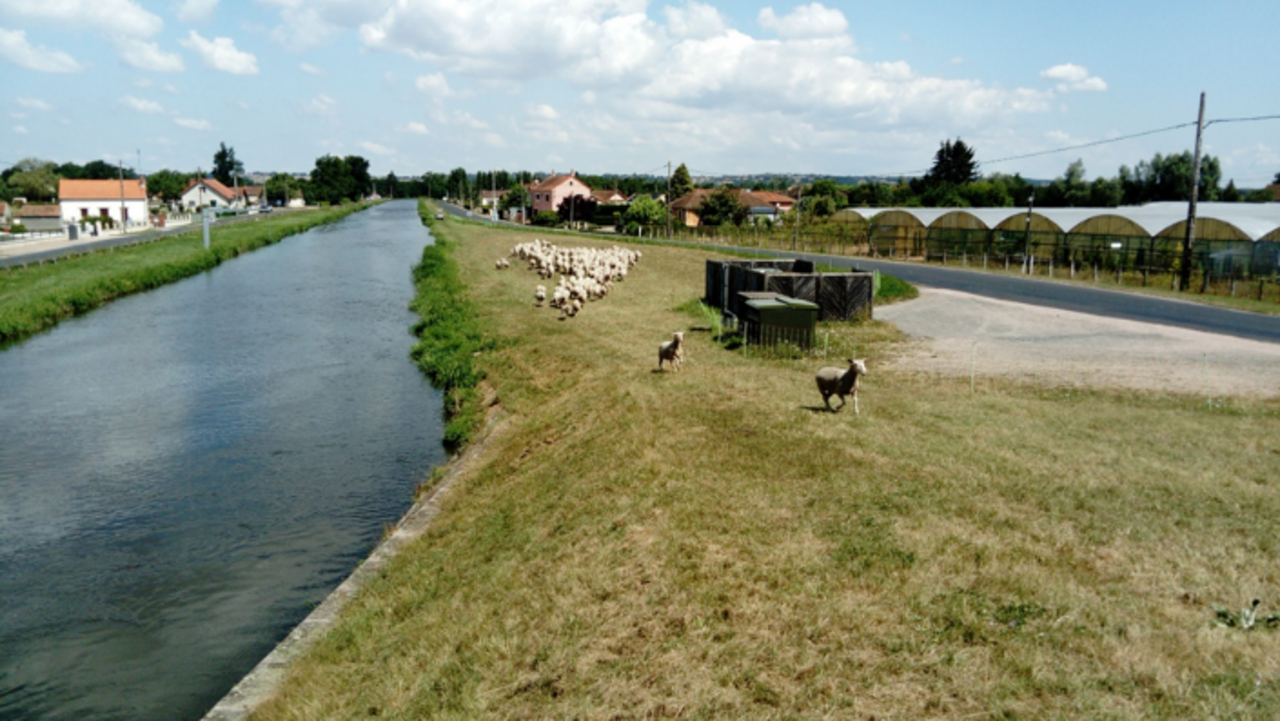The WHO Environmental Noise Guidelines point out that the evidence on the health effects of noise from wind turbines is either non-existent or of low quality. In this context, a feasibility study for an epidemiological study called Cibelius (Connaître l'Impact du Bruit des ÉoLIennes sUr la Santé, 2017-2019) was conducted in France. This study, funded by Anses, was coordinated by UMRESTTE (Epidemiological Research and Surveillance Unit in Transport, Occupation and Environment, IFSTTAR/Université Claude Bernard Lyon 1) and conducted in collaboration with DCM and UMRAE (Environmental Acoustics Laboratory which is jointly managed by CEREMA and IFSTTAR). The objective was to propose a wind noise calculation methodology to identify the number of local residents exposed to different levels of wind turbine noise. The Harmonoise model was finally selected on the basis of a literature review. Overall, the levels recorded for the contribution of a wind farm vary from 35dB(A) to 45dB(A) for distances of 500m to 1,500m, depending on the meteorological conditions. These levels are fairly moderate compared to other sources of noise (e.g. transport) and the total number of people exposed is very low: approximately 0.4% and 0.5% of the French population in 2017. Nearly 85% of the population exposed to wind noise is exposed to levels below 40dB(A), day and night. These results constitute the first ever assessment of population exposure to wind turbine noise in mainland France.
Reference

Understanding, evaluating and improving the interactions between infrastructures, transport services and planning policies, and their effects on the environment and populations
Human activities in the sphere of transport or energy production have an impact on the environment and populations that should be assessed in the first instance. IFSTTAR is working on the different forms this pollution takes, whether it is the pollution of aquatic environments by caesium and mercury (Continuum de la Loire project), or noise pollution in the vicinity of wind turbines (Cibelius project). In both cases, the aim is to assess the exposure of populations. This assessment requires the use of complex sensors and metrology for physical characterisation, as well as the consideration of human feelings in the case of noise, or the involvement of the population through a participative approach in the case of mercury pollution.
Road verges play an important role in limiting the impact of linear transport infrastructures on biodiversity. Their management and maintenance is complex due to the large number of local stakeholders and the multiplicity of factors involved, be they legal, technical, economic, social or ecological. IFSTTAR is helping to analyse this complexity and to propose solutions to increase the effectiveness of management partnerships (Gedev project).
The DGT-DET River Loire Continuum Project - Development of passive sensors for understanding the mobility of caesium (Cs) and mercury (Hg)
The project, funded by the Observatory of the Sciences of the Universe in Nantes (OSUNA) and carried out in partnership with the University of Angers (LPG-BIAF), IMT Atlantique (Subatech) and IRSN (LSE and LER-Nord), aimed to develop tools to study the spatial distribution and environmental mobility of two chemical elements: caesium (Cs) and mercury (Hg). These highly toxic metals are chiefly associated with human activities, the first coming from fallout and discharges related to nuclear activities, the second from industrial emissions (incinerators, coal-fired power plants, refineries, cement works) and diffuse sources (transport, heating, electrical and electronic appliances).
The research has led to the development of a set of functional tools for investigating the environmental dynamics of mobile forms of Cs and Hg. These consist of devices using diffusive equilibration [DET] and diffusive gradients in thin films [DGT] which are based on the pollutant diffusion mechanism. The work has enabled these sensors to be tested in the laboratory and then under real conditions. The results showed that they are able to measure the bioavailability of Hg in soils and sediments as well as Cs ceiling levels in water. In practical terms, the DGT and DET devices were tested along the continuum of the river Loire from leaching areas to estuarine or coastal deposits. Finally, a participatory approach was initiated to assess the levels of Hg pollution in the indoor air of dwellings in the Nantes region (see Figure).
CIBELIUS Project
GEDEV Project on the partnership-based management of road verges: a feasibility study
The GEDEV project, led by INRAE, aims to assess the possibilities of involving local players in road verges. In addition to crucial legal factors due to the purpose of roads and the regulatory powers of their managers, factors of a social, economic, ecological and/or technical nature have been identified, whether they are explicitly taken into account in the agreements we have examined, whether they result from failings experienced by the actors, or whether they result from more general difficulties linked to the overall context. Proposals have been made to address some of these issues and increase the effectiveness of future management partnerships for the observed practices. They relate to the negotiation of specific points between the actors and their formalisation when partnership agreements are drawn up. They also deal with the clauses that can be inserted in all partnership agreements, without being limited to the practices we have detailed in this project. Finally, they are concerned with developing measures that would help to create a more favourable general framework for the extension of grassland along canals and improve recognition of the ecological benefits of some alternative methods of road verge management. These are thus modular elements that can be taken into account (or not) by the actors according to the linear transport infrastructures in question and the local contexts.





